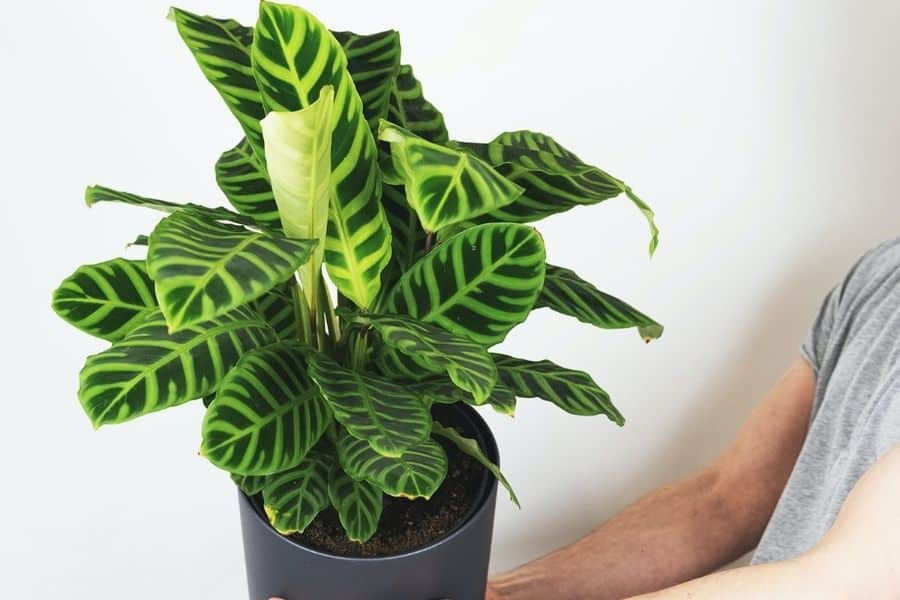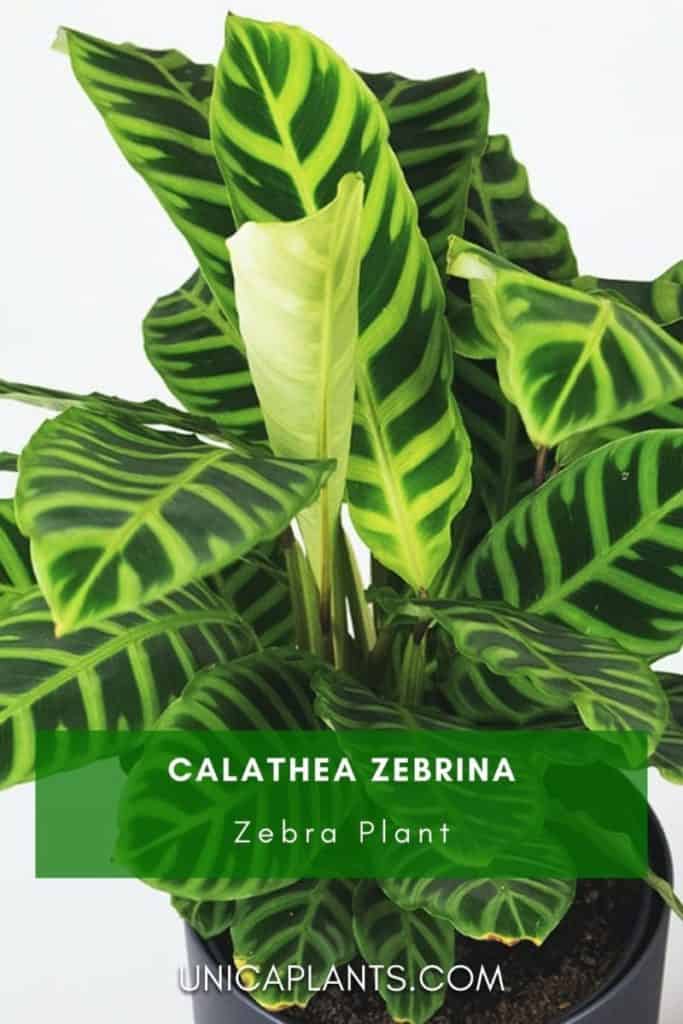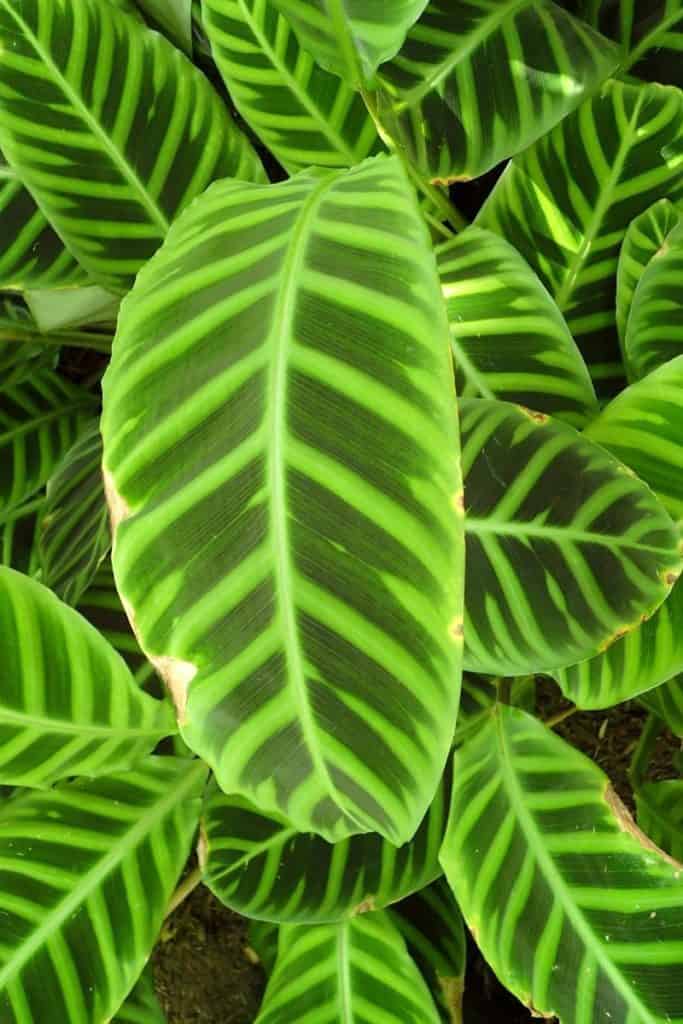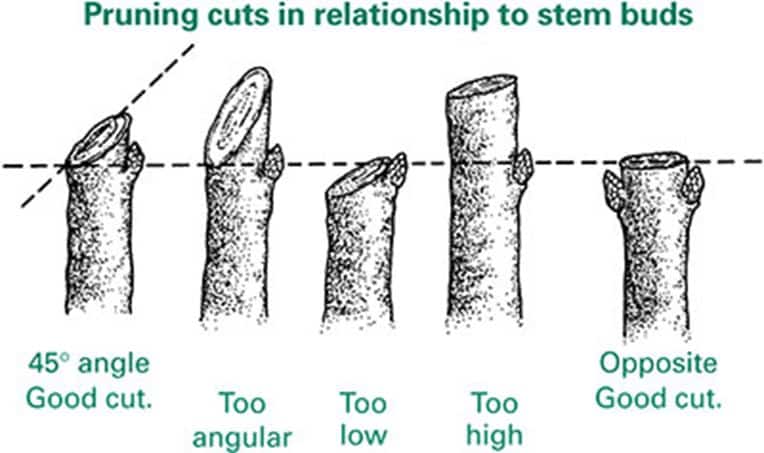
The Calathea zebrina is noted for its bright neon-green colored leaves and is commonly known as the zebra plant. It's not the easiest plant to care for and maintain in good shape because it has specific water and humidity needs. Nevertheless, this plant will make a fantastic addition to your indoor garden collection. If you want to incorporate a tropical aura into your house, this plant will definitely deliver. When taken care of correctly, this plant will shine its intense colors all over the room that it's in (or the garden, if you live in zone 11 or higher). Here's a full Calathea zebrina care guide, including how often to water the plant, which soil to use, where to plant it, and how to propagate it.

Summary:
- Light: Bright indirect light
- Water: Water regularly, keep the soil moist but not soaked
- Soil: Soil needs to drain as well as retain (⅔ peat & ⅓ perlite mix)
- Size: The plant grows up to 24" (0.6 m) tall and wide
- Size: The plant's leaves grow up to 12" (0.3 m) tall
- Zone: 11 (minimum 40°F | 4.4°C)
- Cold hardy: Not cold hardy
- Propagation: By division and seeds
- Toxicity: Non-toxic to humans and pets
Contents
General Care for Calathea zebrina (Zebra Plant)
The Calathea zebrina is a great houseplant but can be pretty hard to take care of if you are a houseplant newbie.
Watering
The zebra plant can be a drama queen as to water and humidity needs. If the plant gets too little water, the leaves are going to curl and get brown spots. If you give too much water and have soggy soil all the time, there is a big chance that the roots will start to rot and the plant will slowly die.
With the Calathea zebrina, you want to make sure that the soil is always a little bit moist, not soaked, but moist. Best is to check the soil twice a week and stick your finger 1" (2,5 cm) deep into the soil to feel if it's dry or moist. If the soil feels dry, it's time to give the plant some water.
Tip: An easy way to give your Calathea the right amount of water is by using a watering globe. This globe will automatically give the plant the perfect amount of water. Click here to check out the watering globe on Etsy.
The Calathea zebrina also likes to grow in an environment where the humidity is high. To mimic this environment, you can mist your plant once or twice a week with water. If the leaves of the plant are drooping or the leaf tips become brown, the plant needs the air is too dry.
Where to Plant
The zebra plant is not cold hardy and is highly sensitive to cold temperatures, so if you live in a zone that gets colder than 40°F (4.4°C) it's best to put this plant in a container. If the temperatures drop during the winter months, you can bring the plant indoors.
It does well in bright indirect sunlight. However, you want to avoid direct sunlight as the leaves will burn and the beautiful colors will fade.
Because the Calathea zebrina likes high humidity, a bathroom would be a great place to keep this plant.

CC image by Krzysztof Ziarnek, Kenraiz.
How to Propagate Calathea zebrina (Zebra Plant)
Unfortunately, unlike most tropical plants, Calatheas cannot be propagated by stem cutting. Propagating Calathea zebrina can easily be done by division. It can also be done by seeds, but this is the more difficult way as seeds are hard to come by.
Division
The Calathea zebrina naturally grows little bundles of roots with stems and leaves growing out of it. If it's time to repot the zebra plant (in spring), you can carefully divide the plant to propagate it.
First, you want to get the plant out of its pot, and carefully remove the soil from the roots. If the soil is removed and you can clearly see the roots, you want to carefully divide the roots. Make sure before you do this, the plant is healthy and big enough to be divided.
After you have cut away the dead and damaged parts of the roots (if there are any), you can pot each division separately in a pot with the right soil mix (for example ⅔ peat moss & ⅓ perlite).
Lastly, you want to put a zip bag over the two pots with the divisions to provide high humidity for the division to grow in (mini-greenhouse). Place the pot with the bag over it in a spot where it receives bright indirect sunlight.
If you see new growth (usually after a month) you can remove the zip bag and now you have two beautiful zebra plants.
Seeds
This is the more challenging way to propagate the Calathea zebrina, but it's possible! First, you want to buy seeds from a trusted supplier...
Then, you want to make a soil mix of 1:1 ratio with peat and coarse sand and fill a small planter or propagation tray with the soil.
Now you can plant the seeds 0.5" (~1cm) in the soil. After that, water the seeds lightly and put a plastic bag over the containers to provide high humidity. Next, put the pots with the plastic bag in a spot that gets lots of bright indirect sunlight and keep the soil moist.
In addition, you want to add a heat mat under the containers to keep the seedlings warm. The heat will improve the germination success rate.
After a couple of months, when the seedlings are 2" (5cm) tall, carefully transplant them into bigger pots without damaging the roots.
Voila! You have now successfully propagated the zebra plant!



Leave a Reply